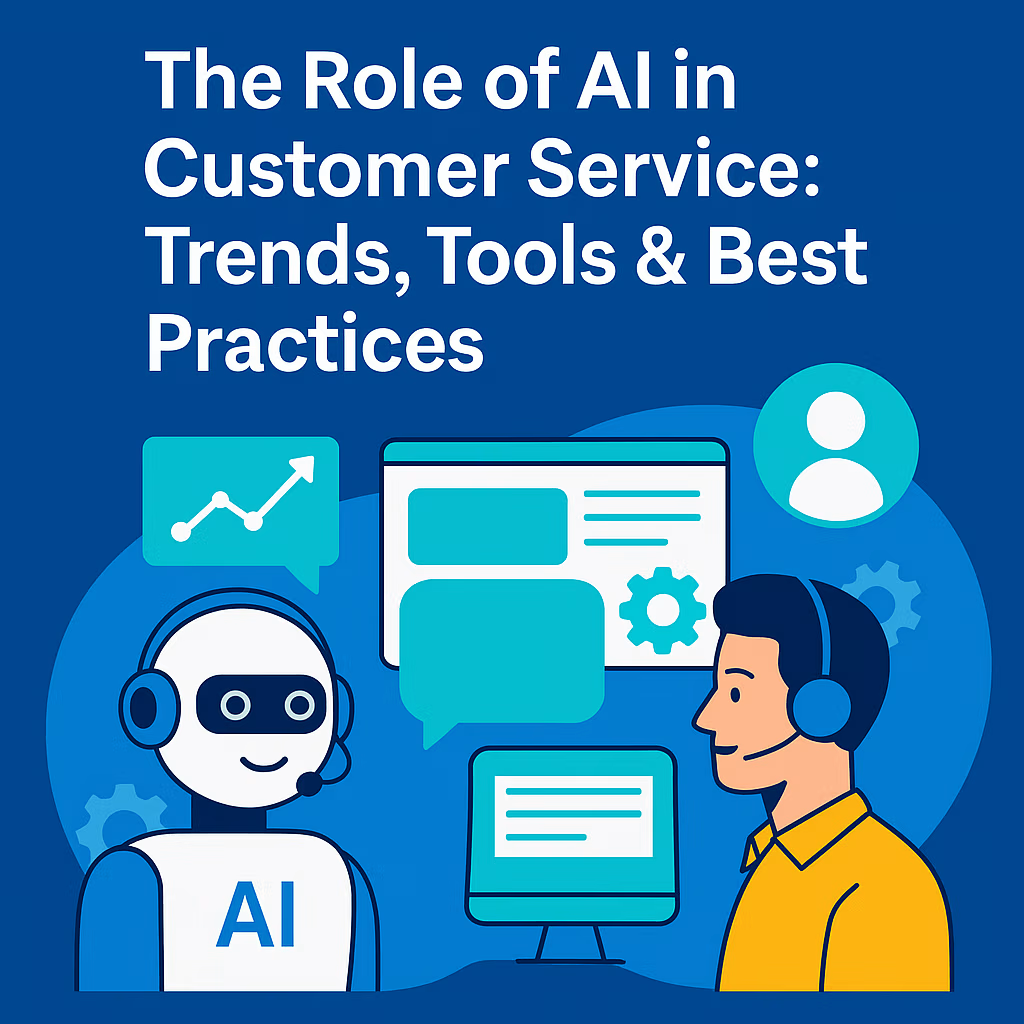The Role of AI in Customer Service: Trends, Tools & Best Practices

In today’s digital-first world, customer expectations are higher than ever. They demand speed, personalization, and consistency across channels. This is where artificial intelligence (AI) is stepping in to redefine customer service. For companies like MessageMind, understanding how AI can empower support teams isn’t just a nice-to-have — it’s a competitive necessity.
In this article we’ll explore the emerging trends, highlight the key tools, and walk through actionable best practices for integrating AI into your customer-service operations. Whether you’re a startup or scaling enterprise, this guide should give you a realistic roadmap.
Why AI in Customer Service Matters
The changing customer service landscape
- Customers expect instant responses, 24/7 availability, and tailored interactions.
- According to research: for example, Gen-Z consumers are more comfortable with AI chat programs for simple issues — but still prefer humans for complex or sensitive topics. (Forbes)
- On the business side, support volumes are rising while headcount is often fixed. AI offers a way to scale intelligently. (aloa.co)
What AI brings to the table
- Efficiency: AI can automate routine tasks, route tickets intelligently, and reduce average handle times. (Newo)
- Insights: AI analytics can surface common intents, sentiment trends, performance across agents, and help you optimise your knowledge base. (Crescendo.ai)
- Personalisation: By leveraging customer history, preferences and context, AI can help deliver more relevant answers and proactive outreach. (Foundr)
Trend Watch: What’s Hot in AI-Powered Customer Service
Big picture trends for 2025
Here are several of the most significant trends shaping how AI is being applied in customer service today:
Intent & sentiment categorisation
Companies are using AI to automatically classify incoming queries by intent (e.g., billing vs technical) and detect sentiment (e.g., frustrated vs happy). This allows smarter routing and prioritisation. (Crescendo.ai)
Predictive and proactive support
Rather than waiting for customers to raise issues, AI can anticipate problems (e.g., repeated support contacts, product usage anomalies) and intervene. (Foundr)
Omnichannel and multilingual support
Support must span chat, email, social media, voice, etc. AI helps unify interactions and deliver consistent service across languages and platforms. (Newo)
Human+AI collaboration (“Hybrid support”)
While AI can handle many interactions, the most effective model blends AI automation with human empathy. AI acts as a co-pilot, freeing agents for complex tasks. (Foundr)
Ethical AI, privacy & trust
As AI makes decisions that affect customers, companies must ensure transparency, data security, fairness and a human fallback. (Blazeo)
Tools of the Trade: Key AI-Enablers for Customer Service
Categories of tools you should know
Here are some tool types worth considering when implementing or upgrading your AI-powered customer service stack:
Chatbots & virtual agents
Used for handling FAQs, routing, order updates, simple troubleshooting. They reduce ticket volumes and provide 24/7 availability.
Agent assist & real-time suggestions
AI tools that help human agents in real time: summarising past interactions, suggesting appropriate answers, surfacing knowledge base articles. (Foundr)
Analytics & sentiment/intent engines
These tools monitor conversations, detect patterns (common issues, spikes in volume, sentiment shifts), and provide dashboards for improvement. (Crescendo.ai)
Routing & workflow automation
AI intelligently assigns tickets based on issue type, complexity, language, agent skill. It automates follow-ups, escalations, and keeps processes flowing. (Wizr AI)
Translation & multilingual support
Especially for global operations: AI can translate customer queries and responses, enabling a consistent experience across languages. (Newo)
The competitive landscape (a few names to watch)
It’s worth knowing who else is playing in this space, both so you know what “industry standard” looks like — and so you can differentiate yourself.
- Uniphore: Offers conversational AI, speech analytics and real-time assist tools. (Wikipedia)
- Gupshup: Provides a conversational AI platform with multi-channel agentic capabilities. (Wikipedia)
- There are also many SaaS tools (help-desk platforms, analytics engines) that integrate AI features — so your choice will depend on business size, industry, compliance requirements.
Best Practices for Implementing AI in Customer Service
Planning and strategy
1. Map the customer journey
Before dropping in a chatbot, understand where your customers struggle: ticket volume, repeat contacts, agent hand-offs. A deep understanding of the journey helps you target high-ROI areas. (packdata.io)
2. Choose use cases with strong impact & feasibility
Not all use cases are equal. According to major industry analysis, you should prioritise those where value is high and implementation risk is manageable. (Gartner)
Implementation & roll-out
3. Start small, iterate fast
Pilot a chatbot for one use-case (e.g., billing queries) before rolling out across all channels. Monitor metrics, gather feedback, iterate.
4. Human-in-the-loop essential
Ensure that AI hands off to human agents when needed. For complex issues, sensitive cases or when the AI fails to understand, the human should take over. This hybrid model ensures trust and quality. (Forbes)
5. Maintain context & personalise
Make sure AI has access to CRM data, prior interactions, customer preferences. That allows more meaningful, not robotic, responses.
6. Monitor, measure, improve
Track metrics like first-contact resolution, CSAT, average handle time, escalation rate. Use AI analytics to flag recurring issues and refine your processes. (Crescendo.ai)
Governance & ethics
7. Data privacy & compliance
If you’re using AI on customer data, ensure you’re compliant with relevant regulations (GDPR, CCPA, etc.). Ensure secure handling of PII and transparent practices. (Blazeo)
8. Transparency & customer trust
Make it clear when customers are interacting with AI and how their data is being used. Offer opt-out or human escalation to preserve trust.
How MessageMind Can Help You Get Ahead
At MessageMind, we believe the future of customer service is smart, strategic, and human-centric. Here’s how you can leverage our platform to harness AI the right way:
- Use our AI-powered dashboard to surface trends in support volume, common intents and sentiment shifts.
- Automate your routine interactions while keeping humans available for complex tasks.
- Scale your support globally with multilingual AI capabilities.
- Maintain full transparency, compliance and governance as your service operations evolve.
If you are ready to make AI part of your support strategy (without sacrificing the human touch), we’d love to partner with you. Schedule a demo today and see how MessageMind can transform your customer service operations.
Conclusion & Call to Action
AI isn’t a silver bullet — but when applied thoughtfully, it can transform customer service from a cost centre to a strategic differentiator. By staying ahead of trends, choosing the right tools, and following best practices around implementation and governance, you’ll be well-positioned for the future.
If you’re curious how you can start (or scale) AI-driven customer service in your organisation, let’s talk. Visit messagemind.ai and explore how our solution can help you deliver smarter, faster, more personalised support.
Ready to move from reactive to proactive service? Get started with MessageMind.

